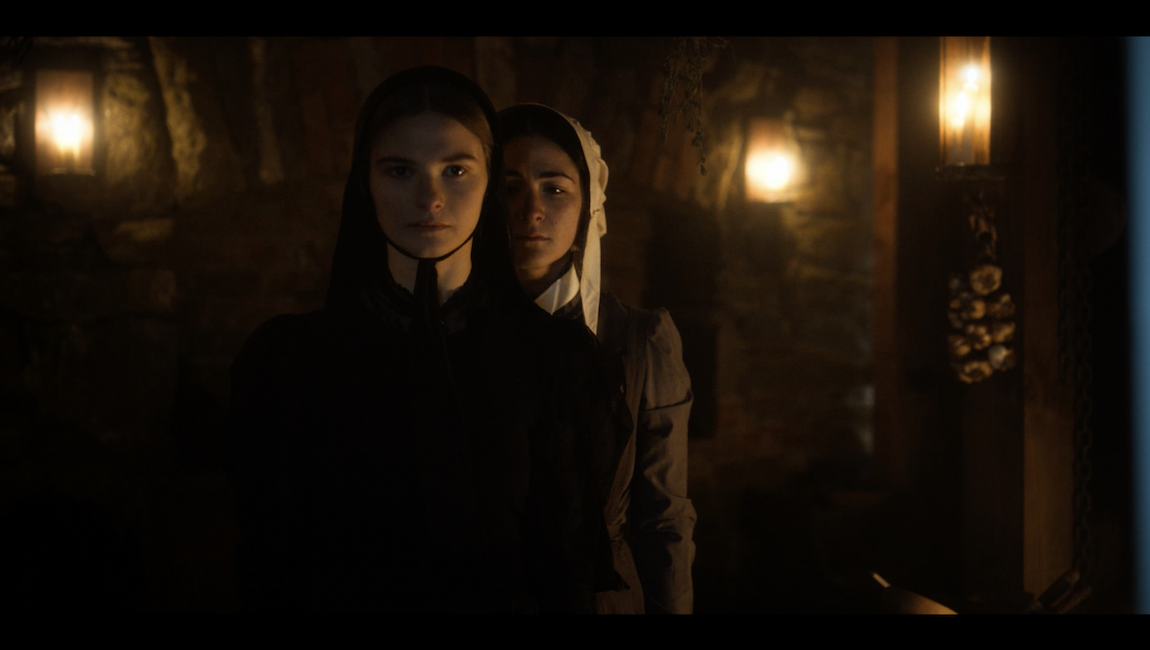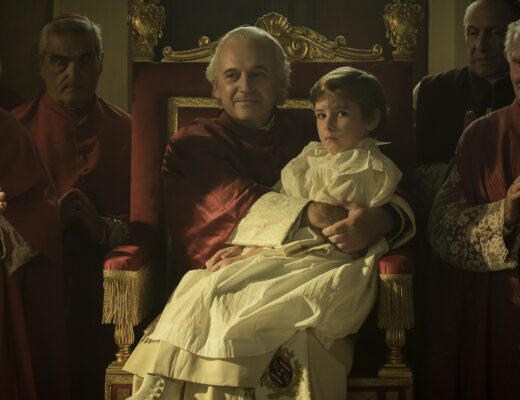The Last Thing Mary Saw is sedate bit of moody horror that takes an array of cinematic reference points and flattens them until there’s little left.
The Last Thing Mary Saw isn’t exactly a bad film per se, but it is exactly what horror cinema doesn’t need right now. Yet another somber, religion-inflected exercise in moody period “horror,” Edoardo Vitaletti’s debut feature plays like a dour inversion of 2021’s Fear Street Part Three — also bad, but at least somewhat adrenalized in its own Nickelodeon way — both films fixing a doomed lesbian love affair at their center. Here, the details concern, of course, Mary (Stefanie Scott) — introduced with blood trickling from blindfolded eyes as she is interrogated about her grandmother’s death, the only memorable part of the film — a young woman raised by a hyper-religious family in a hyper-religious rural Long Island community in the 1840s. The narrative then moves back in time from this setup. The unnamed grandmother (Eraserhead’s Judith Roberts) is a stern matriarch who exerts power over her clan and community, and when Mary becomes sexually involved with the family maid, Eleanor (Isabelle Fuhrman), it becomes clear that for her, the wages of sin just might actually be death. Of course, an extra wrinkle is introduced in the form of a stranger who saunters into town. As he’s played by Rory Culkin, you can quickly predict his general unsavoriness.
But despite the overfamiliar setup and easy calculus of the narrative, The Last Thing Mary Saw isn’t necessarily damned upon conception; the period trappings offer plenty of opportunity for building an effective horror milieu, as does the thematic potential inherent to genre-fied depictions of religion’s symbiotic relationship with evil. The problem, then, is that Vitalleti’s film does nothing to distinguish itself, unless you count its utter solemnity in its favor: the images are frequently cast in near pitch-blackness, action almost entirely occluded; a not insignificant number of line deliveries here are mumbled and/or whispered to the point of indecipherability; and the dialogue that is audible is noticeably in love with its own old-timey, highfalutin character. It’s a vibe, to be sure, but one that’s more oppressive than anything else. There’s a whole lot of candle-lit sequences and a bevy of low-angle shots presumably deployed to articulate some (nonexistent) ominousness, but like everything else here, it feels entirely prescribed — unimaginative, verbatim execution in fire-and-brimstone-style foreboding. Vitalleti could have at least short-circuited the film’s narcotizing effect had he bothered to mussy anything up, but his shiftless approach seems to trust that the film’s particular setting will make up for its clear deficiencies of personality and texture. The final result of all this is something of a contradiction: there’s no denying that there’s a vision here — it would be near impossible to remain this willfully gloomy and sedate without intent — but it’s one that takes its melange of influences (The Village, The Witch, The Crucible, The Virgin Spring) and flattens them to the point of rendering the material comatose. Pardon the excessive cuteness, but Mary should just feel lucky this film wasn’t the last thing she saw.
You can stream Edoardo Vitaletti’s The Last Thing Mary Saw on Shudder beginning on January 20.
Originally published as part of Fantasia Fest 2021 — Dispatch 6.







